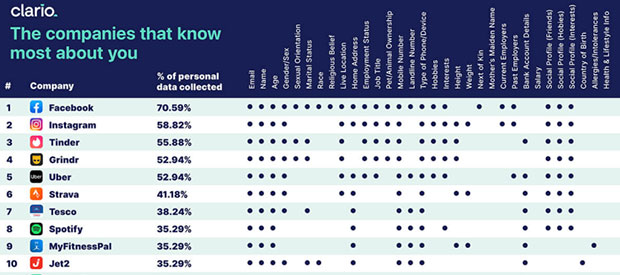Part
01
of two
Part
01
Modern data Collection Practices
Online/social media tracking, subscription, and registrations are some examples of modern data collection practices.
Online/Social Media Tracking
- Online tracking is one of the modern data collection techniques that organizations are using today. Online tracking is often successful through business websites and apps. In this case, an organization may use the services of a web hosting provider or analytics software to track website visitors, how long they were on the website, and what they clicked. As the social media space continues to evolve, more organizations are collecting customer data from these platforms. Social media monitoring allows organizations to see their followers and their characteristics, which informs them more about their target audience, brand mentions, and analytics based on the performance of posts.
- Research indicates that almost 50% of the world’s prolific brands rely on online tracking and particularly through social media. More so, platforms such as Facebook legally collect more than 70% of all the data about users, while Instagram collects almost 59% of data available to it. Other social sites such as Tinder and Grindr collect almost 56% and 53%, respectively. Online tracking is an innovative data collection method as it fetches important details such as users’ names, location, email address, and date of birth. These details can be used to curate the likes and dislikes of a brand’s target audience.
- Taco Bell is an example of brands that collect data through online tracking. Through the years, Taco Bell has continued to cater to its target audience, which mostly comprises the youth demographic. Through data collection, the brand uses the knowledge to create more content that is witty, timely, and a little sarcastic using emojis and memes. Today, the brand has managed to create the Taco Emoji Engine that allows users to interact more with the brand. To achieve this, Taco Bell lobbied a petition and garnered 33,000 signatures online, and five days after introducing the taco emoji, the brand received over half a million direct tweets. Taco Bell has continued to use social media to collect customer data and to run successful campaigns.
Subscription and Registration
- Today, brands are offering their customers something in return such as a rewards program, in exchange for valuable user data. In this case, a brand may engage its customers by inquiring basic information or engaging site visitors who wish to sign up for a brand’s email list. Subscription and registration is an innovative data collection method that creates leads that can be converted as they actively demonstrate an interest in a brand. Often, the forms used to collect this information seek to essentially strike the perfect balance in the amount of data a brand is looking for, without prying or probing too much personal information, which can discourage people from participating.
- Brands such as Zappos are embracing the subscription and registration data collection method as it has proven to be high-value and has a higher conversion chance, compared to traditional data collection methods. In this case, brands are adding a small questionnaire for site visitors or customers who have shown any interest or sign up for emails, rewards programs, or newsletters. By offering customers something in exchange for personal information, brands can collect helpful and relevant information that can help to improve decisions making.
- Through subscription and registration, brands are in a better position to collect relevant customer data depending on the type of business a brand represents. The most common types of data collected through this method include identity data, which includes name, address/contacts, date of birth, gender, social media profiles, and occupation. This method is also ideal for collecting descriptive data such as marital status, which informs a brand on the lifestyle, hobbies, and expectations of customers. In some instances, subscription and registration can help inform a brand on quantitative data such as transactions made by clients.
